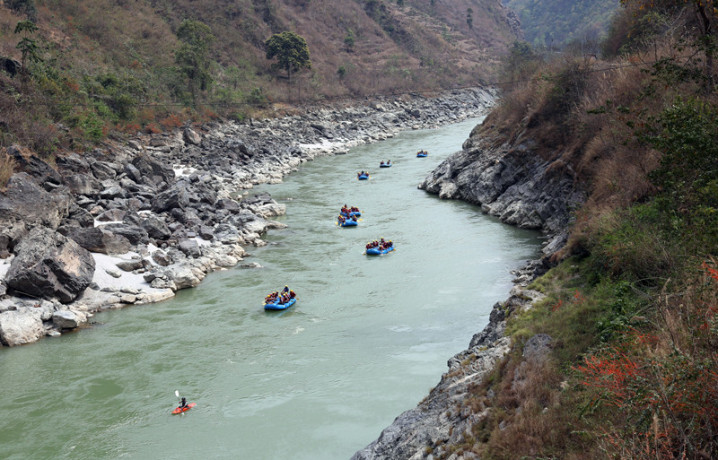Trishuli River: Navigating the Heartland of Nepal Professional
Nov 30th, 2023 at 10:15 Blogs Kathmandu 323 views Reference: 1176Location: Kathmandu
Price: Contact us
Trishuli River: Navigating the Heartland of Nepal
Introduction:
Carving through the heartland of Nepal, the Trishuli River stands as a dynamic and vital watercourse that mirrors the diverse landscapes and cultural richness of the region. Originating in the high Himalayas, the Trishuli weaves its way through valleys and gorges, leaving an indelible mark on the topography and the lives of the people it touches. This article explores the geological origins, cultural importance, and environmental significance of the Trishuli River.
Geographical Origin and Course:
The Trishuli River takes its source from the melting snow and glaciers of the Langtang Himal in the northern part of Nepal. As it descends from the heights of the Langtang Range, the river flows southward through the central region of the country, creating a mesmerizing journey through diverse landscapes.
The Trishuli is known for its confluence with other major rivers, including the Seti River and the Gandaki River, forming a network that shapes the geography of central Nepal. Its course extends through deep gorges, picturesque valleys, and eventually meets the Ganges River in the plains of northern India.
Cultural Importance:
The Trishuli River basin is home to a mix of ethnic communities, each with its unique cultural practices and traditions influenced by the river. The riverbanks are adorned with ancient temples, shrines, and settlements, reflecting the cultural heritage of the area.
The Trishuli holds religious significance, with rituals and ceremonies conducted along its shores. Devotees and pilgrims visit the riverbanks to seek blessings and perform religious activities, emphasizing its sacred role in the lives of the people.
Adventure and Recreation:
Beyond its cultural importance, the Trishuli River has become a playground for adventure enthusiasts seeking the thrill of whitewater rafting and kayaking. The river's rapids offer a range of experiences suitable for both beginners and seasoned adventurers, making it a popular destination for recreational activities.
Tourists and locals alike are drawn to the scenic beauty surrounding the Trishuli, with its lush valleys and towering mountains providing a breathtaking backdrop for outdoor activities. The river's accessibility from major urban centers like Kathmandu and Pokhara adds to its popularity as an adventure destination.
Environmental Significance:
The Trishuli River and its surrounding landscapes contribute to the ecological diversity of central Nepal. The river and its tributaries provide habitats for various flora and fauna, supporting biodiversity in the region. Conservation efforts are essential to protect the Trishuli's ecosystems, with a focus on sustainable practices and habitat preservation.
Challenges and Conservation Efforts:
Like many rivers, the Trishuli faces challenges such as pollution and habitat degradation. Conservation initiatives aim to address these issues, focusing on responsible tourism practices, community engagement, and sustainable development. Balancing the economic benefits derived from the river with the need to protect its environmental integrity is a crucial aspect of ongoing conservation efforts.
Conclusion:
The Trishuli River, with its origins in the majestic Langtang Himal, is a dynamic force that shapes the landscapes and cultural identity of central Nepal. From its cultural significance to its role in providing thrilling adventures, the Trishuli is a multifaceted watercourse that invites exploration and appreciation. As Nepal progresses into the future, it is imperative to recognize the delicate balance between harnessing the river's potential for recreation and preserving its environmental and cultural heritage. The Trishuli River, with its flowing waters and cultural echoes, remains a testament to the intertwined nature of geography, culture, and the environment in the heartland of Nepal.


